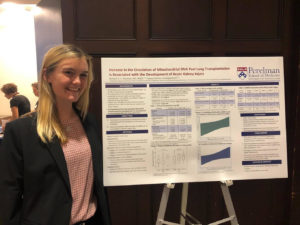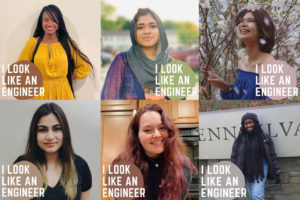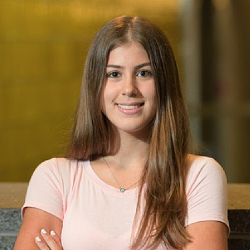Jane graduated in Fall 2017 with both a B.S.E. in Bioengineering (with a Medical Devices Concentration) and M.S.E. in Bioengineering. Jane is currently an Automation Engineer at Mosa Meat (Maastricht, Netherlands) working on laboratory tools to scale up cultured beef production. Formerly, she was a Research & Development Engineer at Opentrons (Brooklyn, New York) working on affordable robots for life sciences research. She is also an instructor with Genspace Community Biology Lab (Brooklyn, New York).

“While at Penn, I worked in the Stephenson Foundation Educational Laboratory and Bio-MakerSpace and in the Chow Lab as a student researcher. The educational lab was a free space to mess around with rapid prototyping tools, including 3D printing, laser cutting, Arduino, and much more. The experience in synthetic biology research encouraged me to think of biology with an engineering lens and to have the confidence to plan my own experiments. The people I got to work with at the BioMakerSpace and the Chow Lab kept me optimistic through challenging semesters and excited to learn.
With this excitement to keep learning, I decided to submatriculate into the Bioengineering Master’s program. Because of the program’s flexibility, I could choose from a mix of project-based courses, like Biomechatronics and Modeling Biological Systems, and literature-based courses, like Tissue Engineering and Musculoskeletal Bioengineering. Outside of Bioengineering, I took classes to sharpen skills in part fabrication (Machine Design and Manufacturing) and programming (Computer Vision & Computational Photography). This breadth helped me realize how much I could do with a foundation in coding and mechanical design and an understanding of the life sciences.
Beyond Penn Engineering, I was involved in Penn Dance Company, CityStep Penn, and the Science & Technology Wing. Penn Dance was a necessary break for my body and mind. CityStep was a way to connect with the larger Philadelphia community through performing arts. STWing showed me how playful engineering can be. After a couple years on campus, I also built up the confidence to bike off campus. If you have a good helmet and quick reflexes, I really recommend it to explore more of Philly!”
This post is part of BE’s Alumni Spotlight series. Read more testimonies from BE Alumni on the BE website.


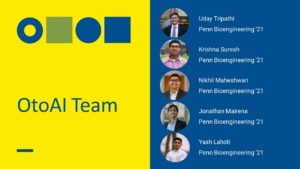

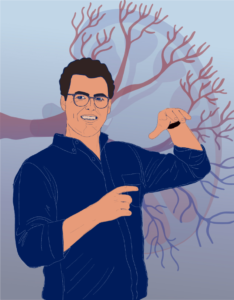

 NextUp, a regular feature of Philadelphia Magazine that “highlights the local leaders, organizations and research shaping the Greater Philadelphia region’s life sciences ecosystem,” ran a profile of Philly-based agricultural startup Strella Biotechnology. Founded by Penn alumna Katherine Sizov (Bio 2019) and winner of a 2019 President’s Innovation Prize, Strella Biotech seeks to reduce food waste through innovative biosensors, and was initially developed in the
NextUp, a regular feature of Philadelphia Magazine that “highlights the local leaders, organizations and research shaping the Greater Philadelphia region’s life sciences ecosystem,” ran a profile of Philly-based agricultural startup Strella Biotechnology. Founded by Penn alumna Katherine Sizov (Bio 2019) and winner of a 2019 President’s Innovation Prize, Strella Biotech seeks to reduce food waste through innovative biosensors, and was initially developed in the 
